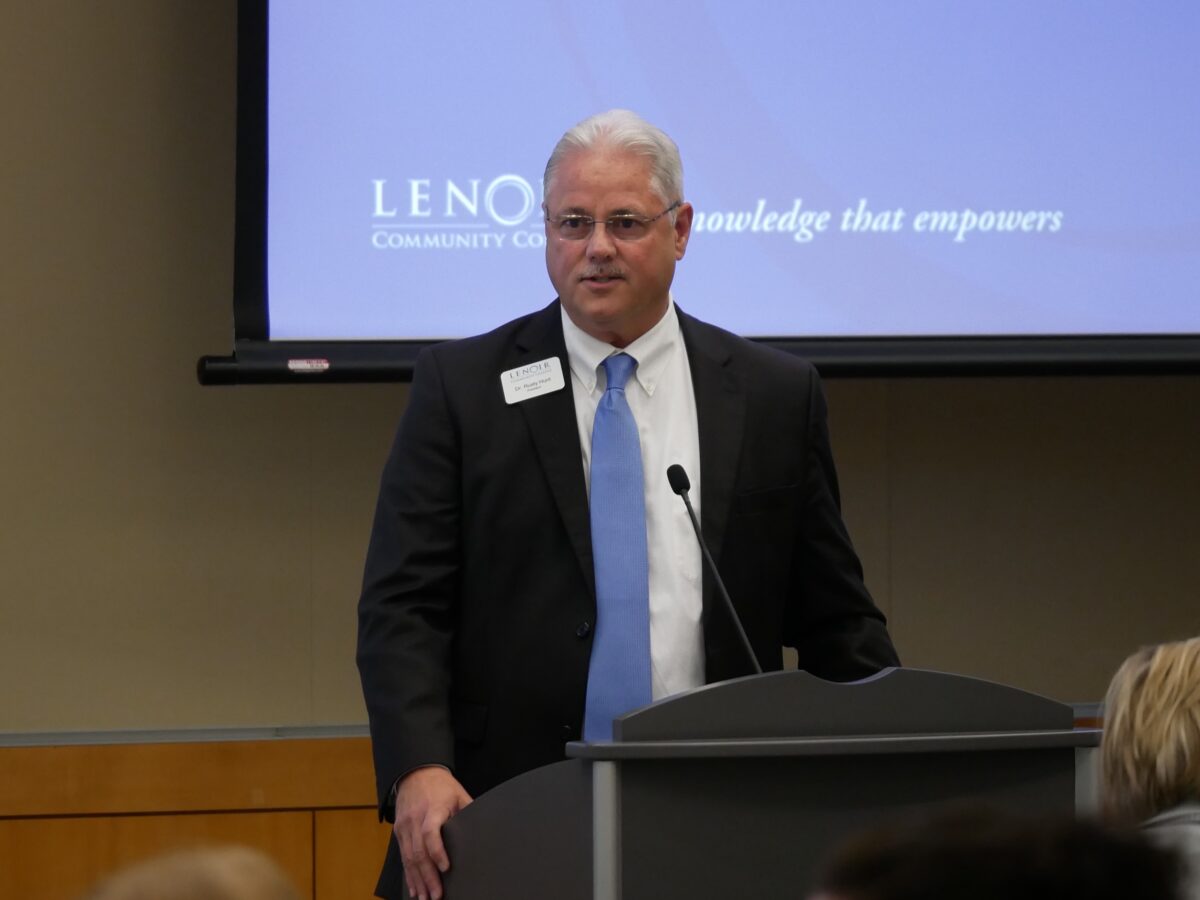
More and more adult learners are seeking short-term training for higher wages instead of degrees, according to national research.
That’s also the case for the students reengaging with community college through NC Reconnect, an initiative launched in 2021 by the John M. Belk Endowment (JMBE), a private philanthropy. The effort is aimed at reaching and reenrolling adult learners who previously attended 24 colleges across the state. In its most recent cohorts, the majority of “reconnectors” are earning a credential through a continuing education program — short-term, skills based courses — over a degree program, said Mike Krause, JMBE’s managing director.
![]() Sign up for Awake58, our newsletter on all things community college.
Sign up for Awake58, our newsletter on all things community college.
“Adult learners are feeling, I believe, an ongoing economic emergency,” Krause said at a “Community of Practice” meeting hosted last week by the Belk Center for Community College Leadership and Research at NC State University, one of the initiative’s several partners.
Faculty, administrators, and presidents of participating colleges met to discuss how to meet student, employer, and community needs through their courses and the systems around them.
“They’re in the emergency room of life, and con-ed is now the pathway that our adult learners are choosing,” Krause said.
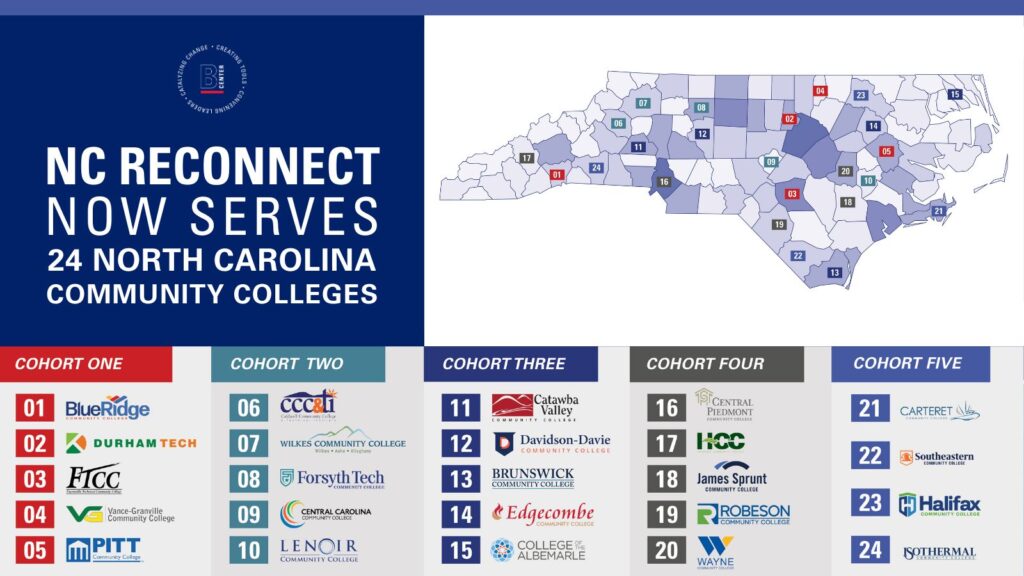
Over the course of the project, colleges have been able to reach about 25% of the 50,000 students they have attempted to contact and, of those individuals, about 23% reenrolled at a participating college, Krause said. That’s compared with an about 3% overall reengagement rate with previous learners.
“It’s working, and it’s completely repeatable,” he said.
In its fifth and most recent cohort, the most popular option for reconnectors was the Commercial Driving License (CDL) for aspiring truck drivers.
Though students’ needs and interests have shifted, continuing education courses do not always receive the same level of attention, coordination, or funding when compared to traditional degree programs, event speakers said. And the people and systems around each — continuing education and “curriculum” programs — do not always communicate.
However, funding opportunities from the state and federal level, as well as efforts from colleges across the state, are changing that.
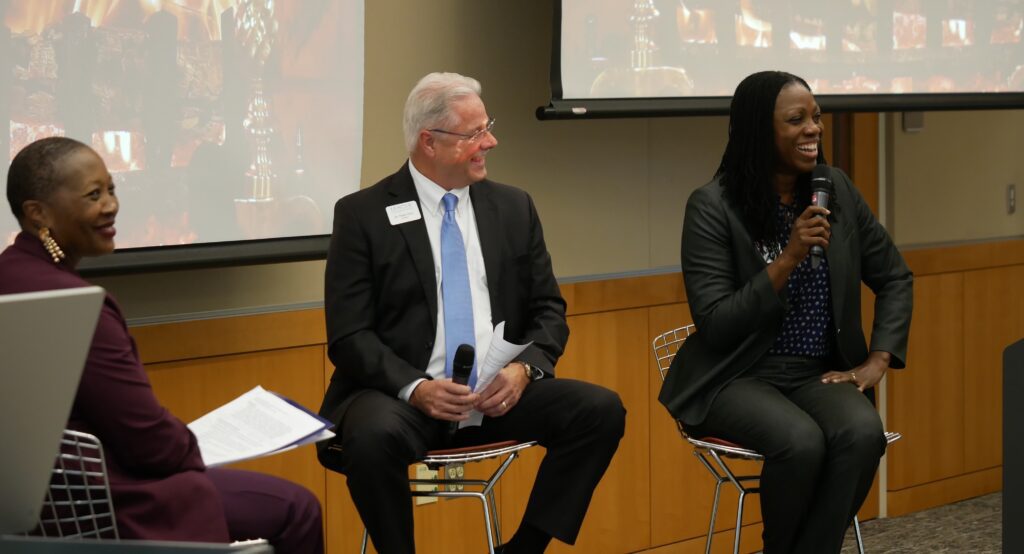
Funding opportunities
Pell Grants, the main federal financial aid for college students, have historically been limited to students enrolled in programs that are at least 600 hours and 15 weeks long. That will no longer be the case by July 2026, when Workforce Pell Grants, passed in President Donald Trump’s One Big Beautiful Bill Act, open tuition assistance to students in short-term, career-focused programs. Students with bachelor’s degrees will also be newly eligible for assistance.
Programs must be aligned with industry-recognized or “portable” credentials, lead to at least 70% job placement upon completion, and result in credits that articulate to additional credentials or degrees, among other criteria.
Some eligibility requirements are still to be determined, and governors and states’ workforce boards will play a large role in determining if courses are aligned with high-skill, high-wage, or in-demand industries.
Related reads
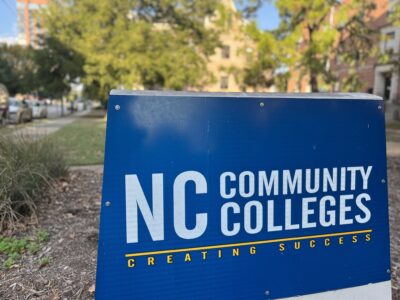

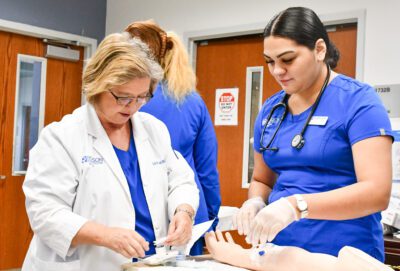
The new funding stream presents an opportunity for implementing a “no dead-end” mindset, said Mark D’Amico, professor of higher education at UNC-Charlotte, who presented to colleges at last Tuesday’s event.
This approach means students are able to continue their learning in financially beneficial ways — no matter where they start. If a student starts in a short-term training program, D’Amico said that person should be able to continue to earn further credentials or a degree program if interested without starting from square one. Similarly, curriculum students, or those in traditional degree programs, should be able to take short-term courses that lead to higher wages.
“If there was ever an impetus for connecting continuing education and the curriculum side, this is the time,” D’Amico said.
He also said data collection before and after students’ enrollment in continuing education courses will be important both to prove eligibility for the new funding stream and to make informed decisions about students’ needs.
Falecia Williams, president of Prince George’s Community College in Maryland, told participants that data collection has helped her school respond to shifting community needs.
“It’s important that we not start with self-preservation — that we start with our need to be responsive to the communities that we are serving in a very meaningful way,” Williams said.
She encouraged colleges to seek local community and workforce data, as well as information on projections and trends.
“Then I encourage you to go to whatever is the best representation of your own institutional, programmatic review or analysis data, and do a bit of a comparison,” she said.
Related reads
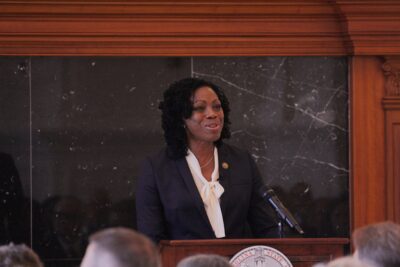
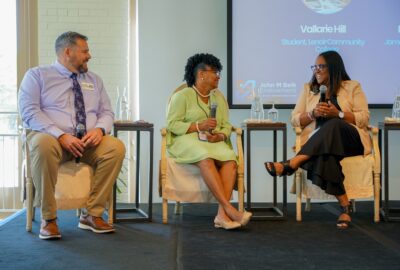
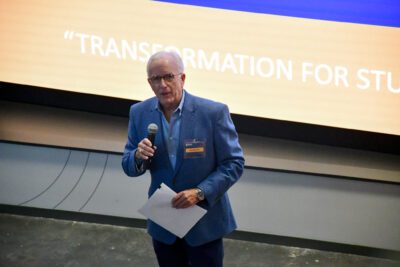
At the state level, the legislature has provided Short-Term Workforce Development Grants to connect community college courses with high-demand occupations.
And a proposed new community college funding model, Propel NC, would reward programs that are connected to high-wage, high-demand careers. The new funding model was the community college system’s funding priority this legislative session, but did not pass.
These funding and policy decisions are being driven by industry needs, said Lenoir Community College (LCC) President Rusty Hunt at Tuesday’s meeting.
“At the federal and state level, it’s coming from business and industry who’s saying, ‘I don’t necessarily need somebody with a degree for this particular skillset, but I need a credential,'” Hunt said.
Connecting the pieces at Lenoir Community College
Before the pandemic, LCC became the first college in the state with more continuing education students than curriculum students, Hunt said.
Continuing education can save both students and colleges time and money — and fill specific local workforce needs, he said. LCC has connected continuing education and curriculum coursework together in programs like aviation, advanced manufacturing, cosmetology, and certain health care occupations.
In advanced manufacturing, he said the college was often losing students before they finished their degrees since they had job opportunities once completing a portion of their programs. The college has now shifted to offering continuing education courses with transferrable credits to curriculum courses.
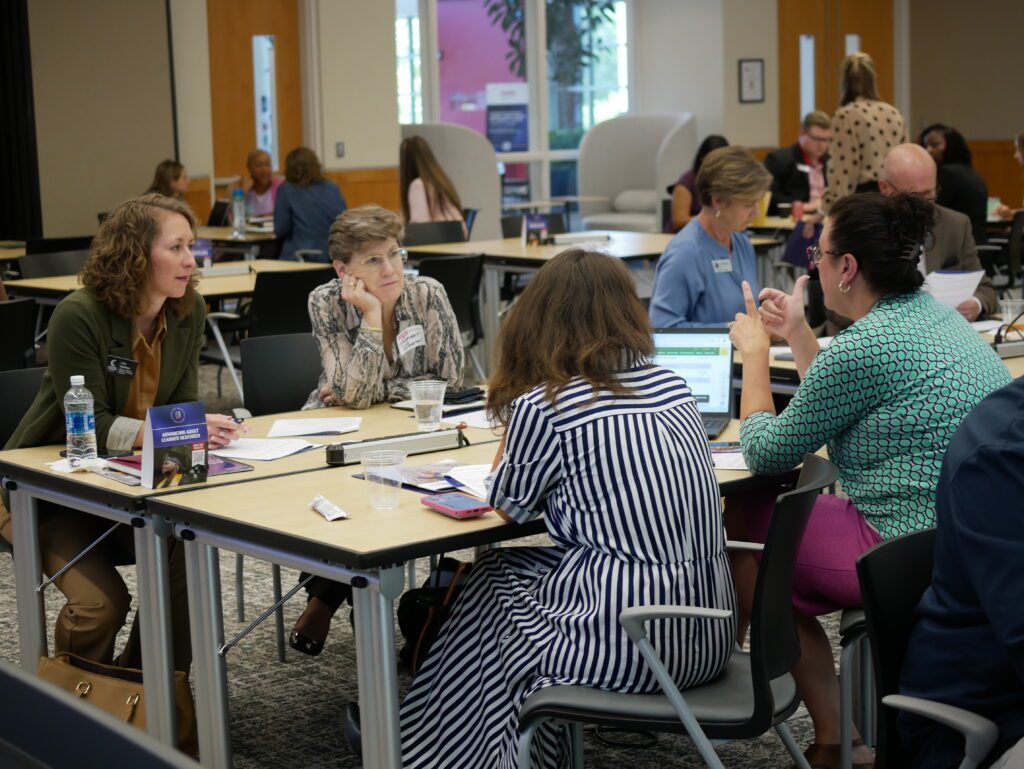
Two to three times as many students sign up for the con-ed classes, Hunt said. He argued those students are more likely to make the best decisions for their futures, including completing further credentials and degrees.
“Many of our students who may have two part-time jobs making $15 an hour, what if we get them into a full-time job making $25 an hour while they continue within our program?” Hunt said. “You’re much more likely to keep that student than you are a student who’s working two jobs trying to get through the curriculum.”
The college has also prioritized serving its growing Latino population, the only growing demographic in its region, Hunt said. The college has participated in Train the East, a $1 million grant from the Anonymous Trust to LCC and three other rural colleges. LCC has used that funding to serve 449 students in high-demand trades and degree programs through its Latino Educational Center.
Related reads
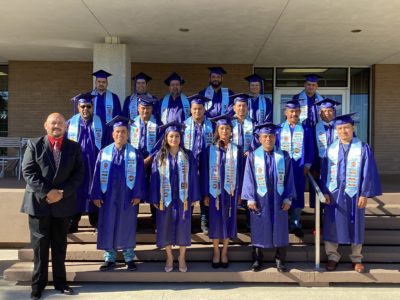


The center offers 20 courses taught bilingually in a variety of programs. It is rooted in a “culturally responsive, community-rooted approach to education and opportunity,” according to Hunt’s presentation. The center serves mainly adult learners on nights and weekends.
“You’ve got to dedicate yourself to delivering these programs when students want them,” Hunt said.
Hunt said he has made sure his faculty understand that more continuing education offerings will not mean eliminating other courses, and that neither con-ed nor curriculum staff feel they are at odds with one another.
The college is in constant communication with local employers, and some of its continuing education courses are the result of partnerships with industry partners.
“Local data is what’s important to our community colleges, in particular, because we serve such a relatively small area compared to colleges across the United States,” Hunt said. “We’re much more in tune to what our business and industry needs and what we need to prepare our students for in the workforce.”
The adaptability and speed of continuing education courses must be preserved as attention, funding, and accountability increases, Hunt said.
“You can’t look at it from the traditional higher education landscape,” Hunt said. “You’ve got to run con-ed like a business.”
Editor’s Note: The John M. Belk Endowment and Anonymous Trust support the work of EducationNC.
Recommended reading



